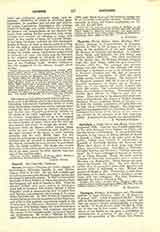

Cassovia, (Hung. Kassa; Germ. Kaschau; Slav, Kosice), Diocese of (CASSOVIENSIS),—in Hungary, founded in 1804 by the division of the Diocese of Agria, in the archdiocese of the same name, and the Dioceses of Cassovia and Szatmar. It includes Abauj, Sexos, and Zemplen. Its first bishop was Andrew Szabo (1804-19). The chief benefactors of the diocese were the Bishops Emerich Palugyay (1831-38); John Perger (1868-76), and Constantin Schuster (1877-87). The episcopal city, situated among vine-clad hills, on the Hernad, 130 miles northeast of Budapest, is one of the principal towns of Northern Hungary and the seat of numerous industries. The population in 1900 was about 40,000, mostly Catholic Magyars. The Cathedral of St. Elizabeth (restored 1882-96) is one of the most beautiful monuments of Gothic art in Hungary. There are in the diocese 197 parish churches and about 300 priests. The ecclesiastical seminary has about fifty students of theology. Premonstratensian Canons have houses at Cassovia and also at Lelesz. There are also in the diocese four small convents of Franciscans, two houses of Piarists, besides Ursulines, Dames Anglaises, Sisters of Charity, etc. In 1900 the Catholic population of Latin Rite was 307,186; Greek Catholics, 160,527. The Protestant population numbered 898,727; Israelites, 35,475. An illustrated description of the diocese in two volumes was printed on the occasion of its first centenary (1904). A history of the diocese was then published.
A. FISCHER-COLBRIE

